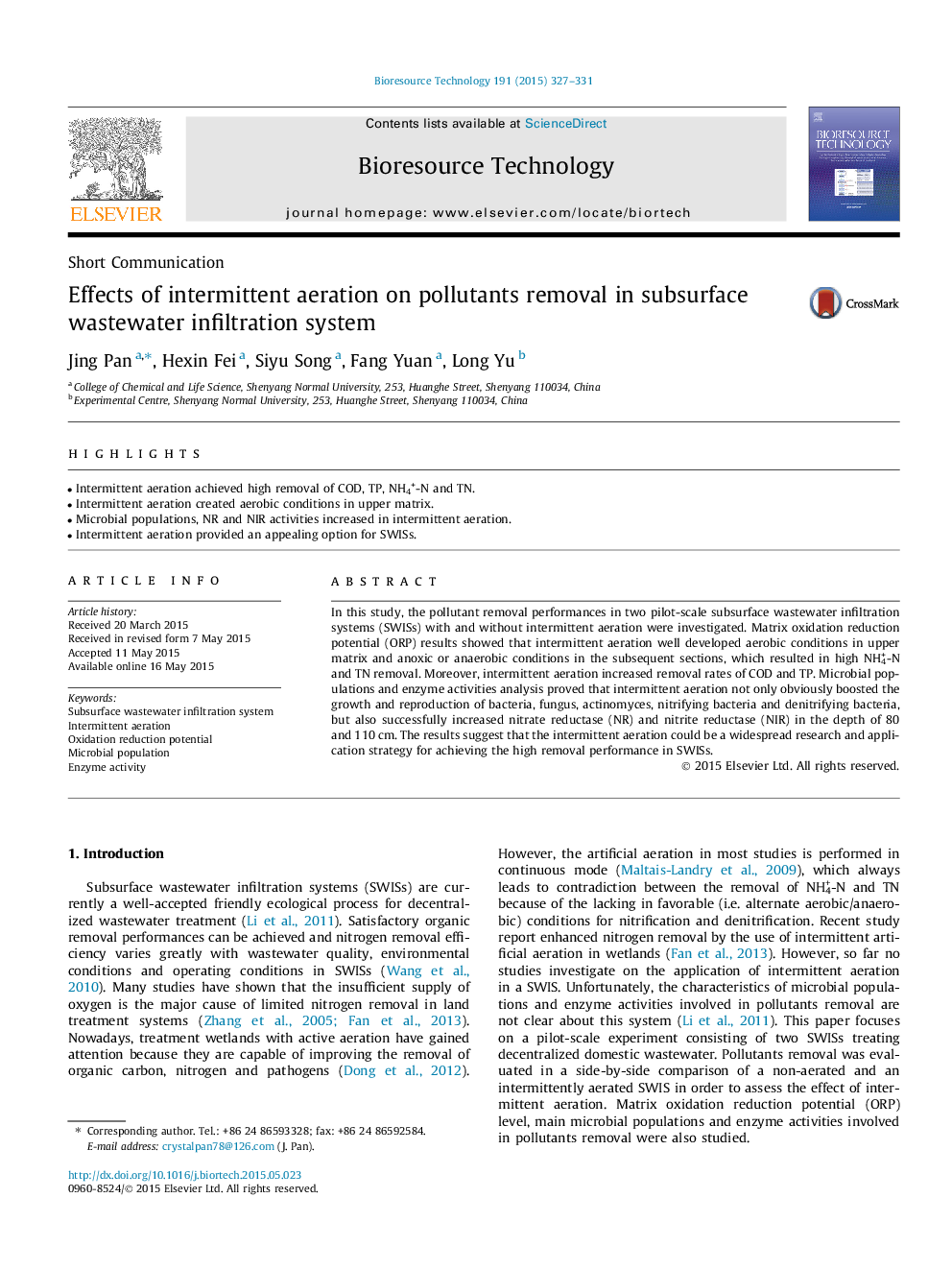| Article ID | Journal | Published Year | Pages | File Type |
|---|---|---|---|---|
| 679606 | Bioresource Technology | 2015 | 5 Pages |
•Intermittent aeration achieved high removal of COD, TP, NH4+-N and TN.•Intermittent aeration created aerobic conditions in upper matrix.•Microbial populations, NR and NIR activities increased in intermittent aeration.•Intermittent aeration provided an appealing option for SWISs.
In this study, the pollutant removal performances in two pilot-scale subsurface wastewater infiltration systems (SWISs) with and without intermittent aeration were investigated. Matrix oxidation reduction potential (ORP) results showed that intermittent aeration well developed aerobic conditions in upper matrix and anoxic or anaerobic conditions in the subsequent sections, which resulted in high NH4+-N and TN removal. Moreover, intermittent aeration increased removal rates of COD and TP. Microbial populations and enzyme activities analysis proved that intermittent aeration not only obviously boosted the growth and reproduction of bacteria, fungus, actinomyces, nitrifying bacteria and denitrifying bacteria, but also successfully increased nitrate reductase (NR) and nitrite reductase (NIR) in the depth of 80 and 110 cm. The results suggest that the intermittent aeration could be a widespread research and application strategy for achieving the high removal performance in SWISs.
